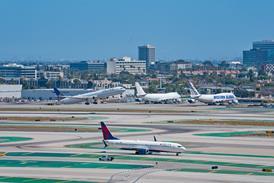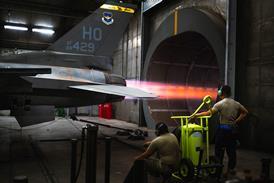David Learmount/LONDON
The total loss of power from its two port engines was not caused by fragments from the exploding tyre, investigators into the Air France Aerospatiale/British Aerospace Concorde accident have found.
The discovery is a boost to the programme to get Concorde back into service, because it was the loss of power, rather than the wing fire, which caused loss of control and led to the 25 July 2000 crash which killed all 109 people on board.
The Concorde Working Group (CWG) says that a British Airways Concorde is likely to be airborne in February to test modifications designed to reduce its vulnerability to damage resulting from a mainwheel tyreburst.
At the CWG's London meeting on 15 December the Group reported: "Investigation by the manufacturers has shown that the amount of engine damage sustained would not have led to a catastrophic loss of thrust. Currently no modifications are planned to the engines or their installation."
The interim accident report by the Bureau Enquête-Accidents confirmed "soft body" damage to the two engines, but that the crew had shut down No 2 engine following an engine fire warning.
The investigators found no evidence of an engine fire. It has since emerged that the No 1 engine lost some power following minor damage. The loss of all thrust may have been caused by intake airflow disturbance resulting from yaw owing to asymmetric power, low speed, and the failure of the gear to retract.
The inquiry still does not know what it was that caused the undercarriage retraction failure, or what ignited the fuel escaping from the pierced left wing. Industry sources believe the most likely ignition point was a damaged cable delivering 115V a/c to the wheelbrake cooling fans, but this has yet to be proven.
Action to develop acceptable modifications have received a formal launch from the CWG. These include the development and testing of a fuel tank internal lining, measures to protect against an ignition source and damage to hydraulic lines, and a study of the loss of engine power.
Source: Flight International























